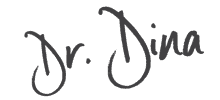How do you Get Lice?
A common question parents ask is how to deal with head lice. So, what are these little bugs, and which treatment should you use?
Head lice are tiny insects that live in the hair of an infected person’s scalp or on a hat, scarf, or other clothing. They feed by biting skin cells off from humans’ scalps; this can lead to itching for those who have itches but do not see any signs yet, such as nits (mature eggs) attached near the root area of your hairs!
One single head louse may contain up to sixteen eggs, so removal must be done cautiously since they could contaminate items like pillowcases and hats if left behind. Some treatments include over-the-counter medications containing pyrethrin.

What is Head Lice Exactly?
It’s important to know that lice are tiny, wingless insects. They feed on blood and lay eggs in the hair while irritating skin with their saliva. The best way of knowing if your child has a louse is by looking for symptoms such as major itching or scalp wounds from scratching too much!
Nits are the name for lice eggs in your hair. These light gray eggs stick to a strand of hair and can be difficult to remove, but they hatch only after about one week.
The nape of your neck is a great place to check if you’re worried that someone has head lice.
These little creatures are so small they can hide in the most tightly coiled hair, making it difficult for them to be spotted by inspection alone. The ears and back of the scalp also offer hiding spots where these critters may reside on victims who have no idea their heads harbor such pests until symptoms become noticeable.
People with good personal hygiene can still get lice! Unless treated properly, this condition could return.
How Do You Get Lice?
Hair contact is how lice spread. This means children sharing hats, pillows, towels, furniture, hairbrushes, or even doing schoolwork or playing close together are at risk of catching them. Lice can’t fly or jump, meaning they need direct contact to infect someone else.
These critters can affect anyone who has hair. It’s nothing to do with poor hygiene – they actually prefer clean hair.
You can get head lice by coming into contact with lice or their eggs from:
- hair accessories,
- hats,
- combs,
- school,
- child care,
- stuffed animals,
- clean clothes,
- bed linens and
- so much more …
Lice cannot jump, fly, or swim; They spread through head-to-head contact and body-to-body contact.
To give you an idea of how common lice are, between 6 and 12 million infestations occur in children aged 3 to 11 every single year in the United States!
Head Lice vs. Dandruff
Lice can look like dandruff, although dandruff is easier to remove. Again, you might need to ask a healthcare professional to look if you’re unsure which you are dealing with.
Adult head lice spread disease by laying eggs called nits. Dandruff causes flaky skin. The two look similar, but close inspection reveals key differences. Nits stick to the hair and are hard to remove without causing damage, whereas flakes of dandruff will easily fall off with a simple brushing or combing motion that does not cause any harm at all!
While one can see visibly presented signs of the dry scalp on their head where lice lay eggs–such as scabs from scratching too much due to itchiness–dandruff is only visible when someone has white patches in between the hairs (rather than atop them).
Lice Natural Remedies for Kids
You will need to use medication on the scalp and hair to get rid of head lice.
Washing Everything:
- hats,
- hair brushes,
- clothes,
- toys, and
- bedding in hot soapy water is also recommended.
Alternatively, store them in a sealed plastic bag for two weeks.
So what Kills Lice Eggs?
You will need an insecticide such as Nix or Nyda.
Apply it twice, 7 to 10 days apart.
-This is so any eggs that hatch after the first treatment can also be treated. It’s a good idea to treat everyone in the family in the prevention of head lice infestation.
If over-the-counter medication doesn’t work, you might have to repeat it or seek medical advice. The adult lice and nits might not have been ultimately killed, or they might be resistant. It’s also possible to get re-infected.
Some try vinegar, mayonnaise, or oils to eliminate the head lice, but these don’t seem to help.
Wet Combing
is one of the best lice natural remedies if you want to avoid insecticide or if you’re treating a child under four years old. Apply plenty of conditioner to your child’s hair and massage it right into the scalp. Leave it for 15 minutes, perhaps adding a shower cap.
The adult head lice will suffocate in the conditioner and release their grip on the hair shafts. You can then use a fine-tooth comb (available from any pharmacy) to remove the dead lice, rinsing it underwater between each stroke. Repeat this method every couple of days until you no longer see head lice nits.
There is no evidence that tea tree oil, mayonnaise, or other natural lice remedies help kill lice or nits.
There are also lice treatment disease control practitioners in major cities who can perform the treatment protocols for you and your family.
Can a Child with Lice Go to School?
Lice, a pesky problem for many kids and parents alike.
Head lice will spread like wildfire in school if not dealt with immediately.
It is important to get rid of lice before it’s too late!
A nightmare that every parent would love to avoid: head lice spread throughout your child’s kindergarten class, quickly infecting the entire student body because they didn’t take care of their own hair properly at home!
FAQ – Frequently Asked Questions
Do You Get Lice Only From Head to Head Contact?
Adult lice live on the human head and transfer from one person to another through direct contact with their hair or from an object such as a brush or bedding.
How to Decipher Lice vs. Dandruff?
Not sure if you have lice or dandruff?
Here are a few telltale signs to help determine the difference:
Lice are more difficult to remove than dandruff and sometimes leave white specks.
Head lice eggs, called nits, can also be found on clothing near hairlines where these pesky bugs like to nestle in strands of hair.
What is Body Lice?
Body lice are tiny insects that live in your clothes and bedding, where they feed on human blood.
They are about the size of a sesame seed, the most common places these bugs bite their human host would be around the neck, shoulders, or armpits-places where clothing meets skin with ease.
Which Head Lice Treatment is Best?
It is best to review your child’s lice with their healthcare provider. Lice natural remedies such as tea tree oil, mayonnaise, and butter do not kill nits or lice. Instead, use insecticide lice medicine on the advice of your doctor. Consider combing out the lice and nits with a lice treatment provider.













